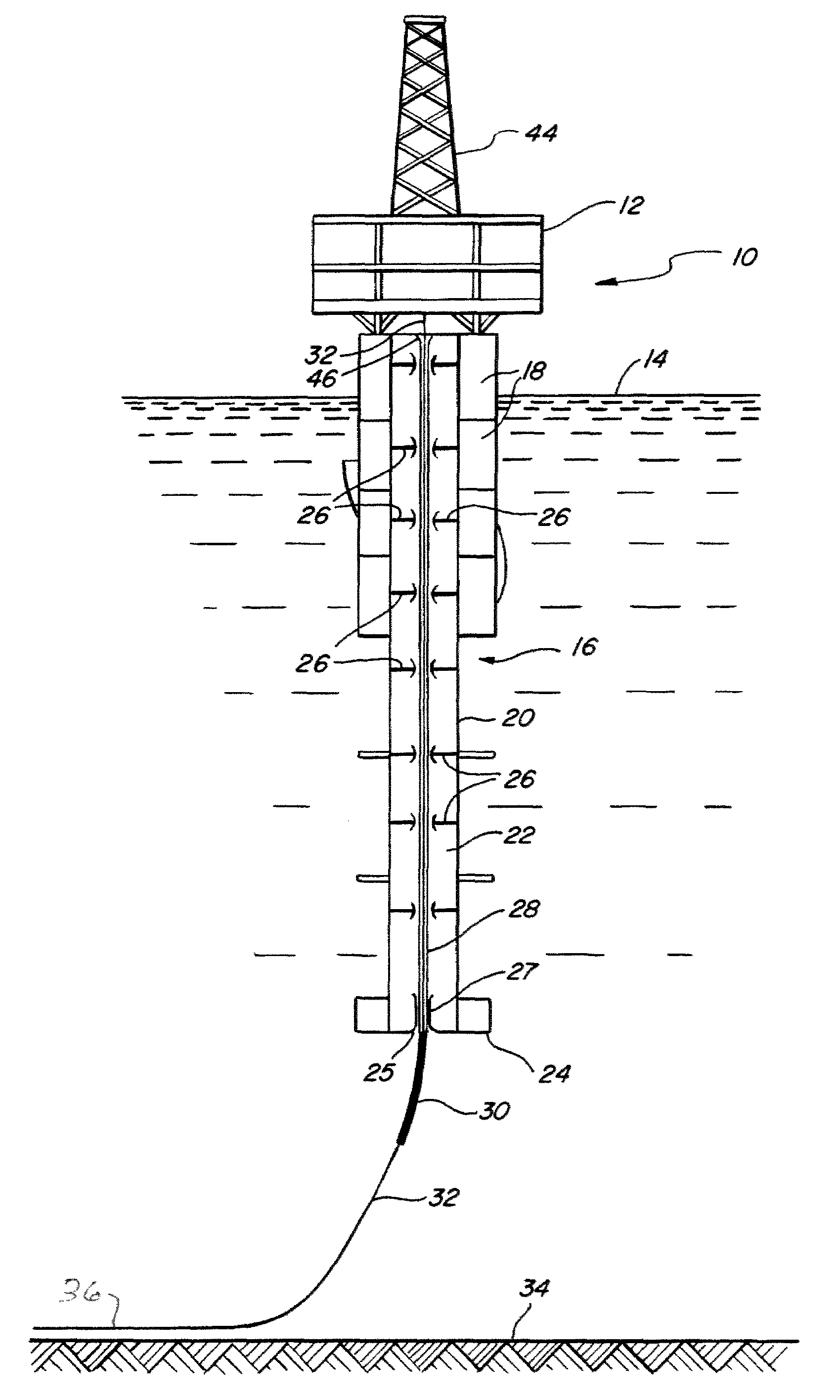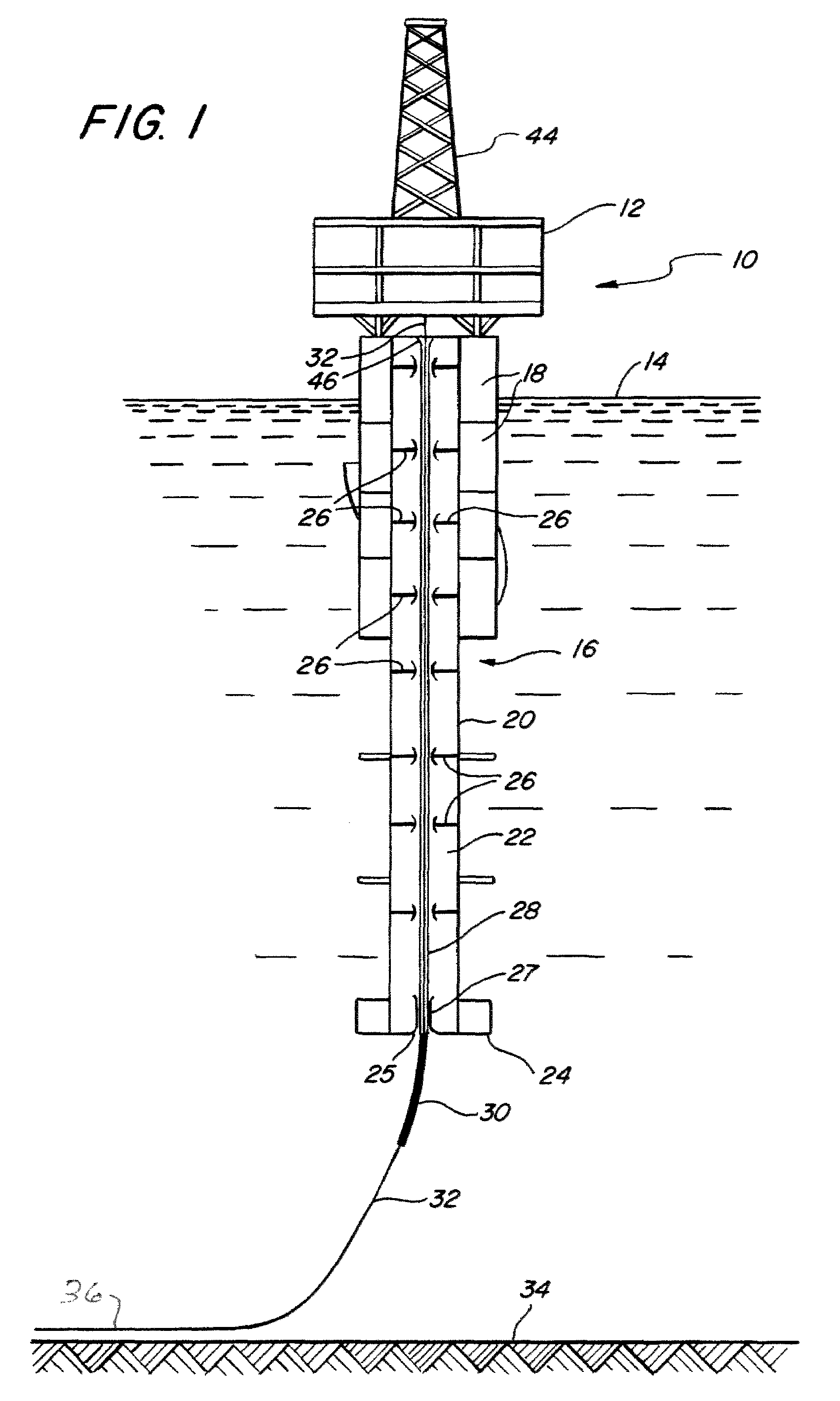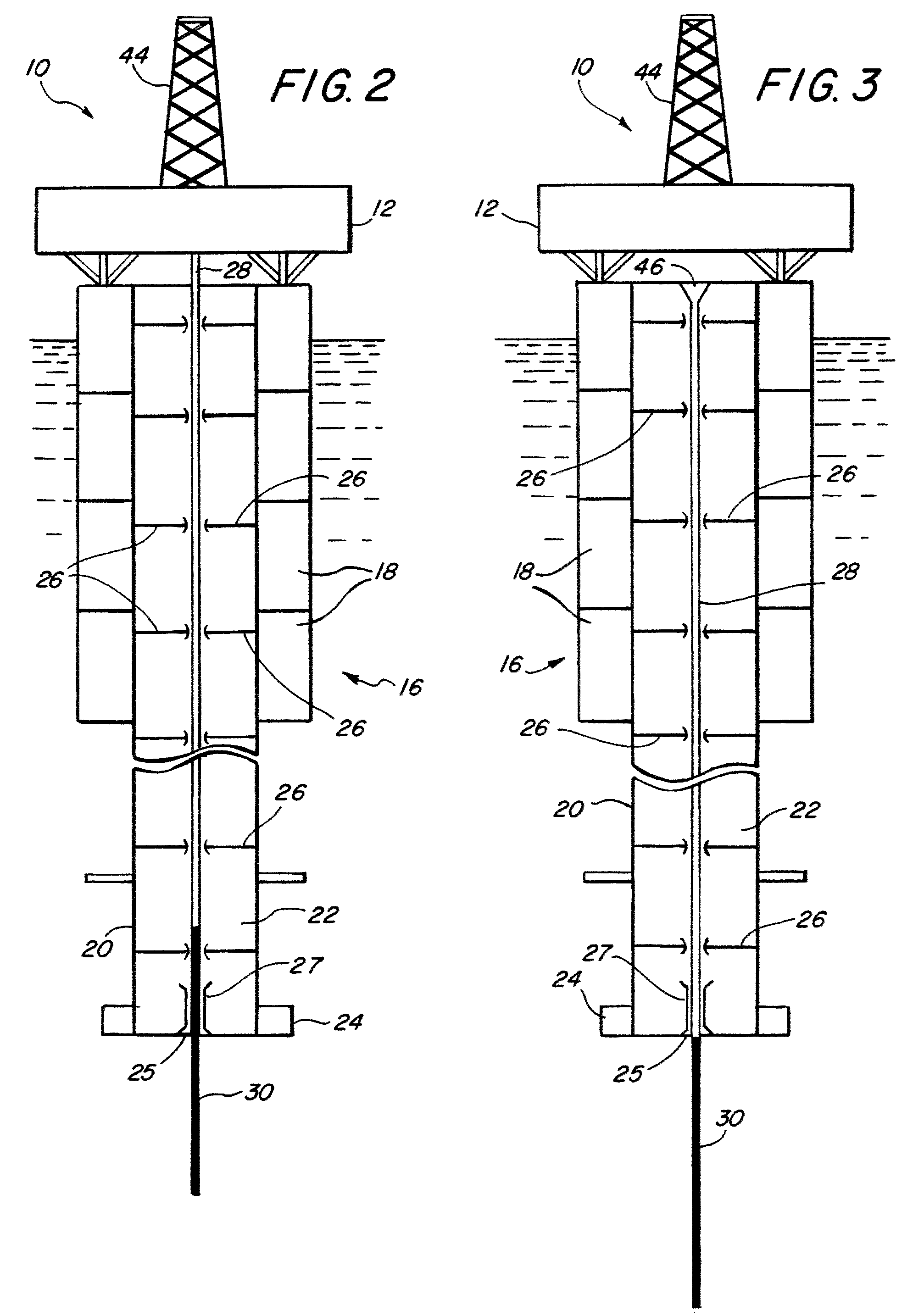Control of flexible riser curvature at the keel of a floating structure
a floating structure and curvature technology, applied in the field of offshore drilling and production platforms, can solve the problems of inability to optimally support the dynamic motion of the riser relative to the platform, fatigue and failure, etc., and achieve the effects of reducing the thickness of the pipe wall, increasing the weight per unit length, and increasing thickness
- Summary
- Abstract
- Description
- Claims
- Application Information
AI Technical Summary
Benefits of technology
Problems solved by technology
Method used
Image
Examples
Embodiment Construction
[0018]As used herein, the terms “invention” and “present invention” are to be understood as encompassing the invention described herein in its various embodiments and aspects, as well as any equivalents that may suggest themselves to those skilled in the pertinent arts.
[0019]FIG. 1 shows a spar-type platform 10 of conventional design. The platform 10 comprises a deck structure 12 supported above the surface 14 of a body of water by a buoyant hull 16. The hull 16, in turn, comprises an array of buoyancy tanks 18, some of which are “hard” tanks (air-filled), and some of which are “soft” tanks (floodable with water for adjustable buoyancy). The tanks 18 are arranged around a central column 20 that defines a centerwell 22. The bottom end of the central hull column 20 terminates in a ballasted keel 24 having a bottom opening or slot 25 that communicates with the centerwell 22. A plurality of riser guides 26 are disposed at spaced intervals along the length of the centerwell 22, with a ke...
PUM
 Login to View More
Login to View More Abstract
Description
Claims
Application Information
 Login to View More
Login to View More - R&D
- Intellectual Property
- Life Sciences
- Materials
- Tech Scout
- Unparalleled Data Quality
- Higher Quality Content
- 60% Fewer Hallucinations
Browse by: Latest US Patents, China's latest patents, Technical Efficacy Thesaurus, Application Domain, Technology Topic, Popular Technical Reports.
© 2025 PatSnap. All rights reserved.Legal|Privacy policy|Modern Slavery Act Transparency Statement|Sitemap|About US| Contact US: help@patsnap.com



